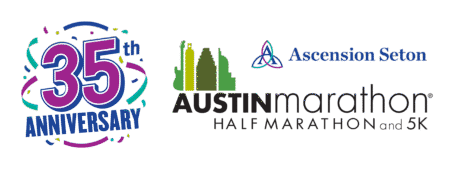Our Favorite Training Apps to Help You Crush the Austin Marathon
Hey runners! Whether you’re gearing up for your first Austin Marathon or chasing a shiny new PR, the right training app can seriously level up your game. We’ve rounded up our top training apps that keep workouts fun, effective, and perfectly tuned to help you confidently cross the Austin Marathon finish line.
1. Strava: Your Social Running Companion
If you run it but don’t Strava it, did it really happen? Strava is a favorite among runners everywhere, combining social media with excellent tracking features.
- Why we love it: Connect with fellow Austin runners, explore new routes around Lady Bird Lake or the Barton Creek Greenbelt, and challenge yourself on local Strava segments. It’s ideal for building your Austin running community and boosting motivation.
- Austin Marathon Bonus: Follow the Austin Marathon on Strava and connect with fellow trainees.
2. Nike Run Club: Personal Coaching at Your Fingertips
Nike Run Club offers personalized training plans that adjust based on your progress and goals. Whether you’re preparing for your first Austin Marathon or aiming to speed up, Nike’s got your back.
- Why we love it: Audio-guided runs from expert coaches and athletes keep your motivation high during those long Sunday loops around Town Lake.
- Austin Marathon Bonus: Tailored marathon training plans designed specifically for handling Austin’s challenging hills and unique terrain.
3. Runkeeper: Simple (Yet Powerful) Training Tracker
Runkeeper helps you effortlessly track your runs, set clear goals, and monitor progress, making it perfect for runners who prefer keeping things simple yet effective.
- Why we love it: User-friendly interface, personalized training plans, and easy progress tracking ensure you stay focused without getting overwhelmed.
- Austin Marathon Bonus: Use Runkeeper’s interval training options to practice pacing and tackle challenging hills like Congress Avenue and the Enfield Road climb.
4. MapMyRun: The Ultimate Route Planner
Brought to you by Under Armour, MapMyRun helps you find, plan, and track your runs with pinpoint precision.
- Why we love it: Explore fresh Austin routes, accurately track distance, elevation, and pace, and make your training sessions more engaging.
5. Garmin Connect: Ideal for the Data-Driven Runner
If diving deep into stats gets your heart racing, Garmin Connect seamlessly pairs with Garmin watches, unlocking advanced running metrics.
- Why we love it: Analyze detailed metrics like pace, cadence, heart rate, VO₂ max, sleep, and recovery—everything you need to reach peak performance.
- Austin Marathon Bonus: Fine-tune your pacing strategy using detailed data insights to confidently handle the ups and downs of Austin’s hilly course.
How to Choose the Best App for Your Austin Marathon Journey
When picking the perfect training app for your Austin Marathon prep, keep these factors in mind:
- Goals: Need personalized coaching or prefer connecting with others? Select an app with tailored training programs or vibrant community features.
- Device Compatibility: Ensure the app smoothly syncs with your favorite devices (smartphone, smartwatch, fitness trackers).
- User Experience: Go for an app with a straightforward, intuitive interface that keeps you motivated rather than frustrated.
- Austin-Specific Features: Opt for an app that integrates local running routes, communities, and addresses unique race-day conditions like hills and Texas weather.
Your Austin Marathon Training Just Got Easier (and More Fun!)
There you have it, Austin runners—our favorite training apps, designed to elevate your Austin Marathon preparation. No matter your running style or goals, there’s an app here to help you finish strong, smiling, and proud!
See you on the roads, Austin. Happy training and we can’t wait to cheer for you on marathon day!



















